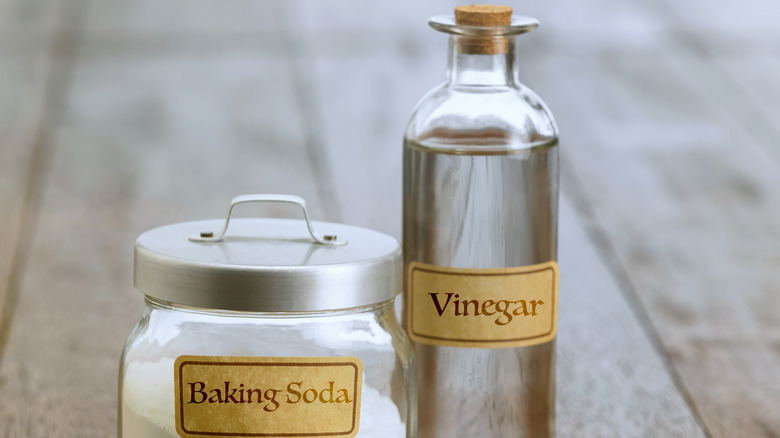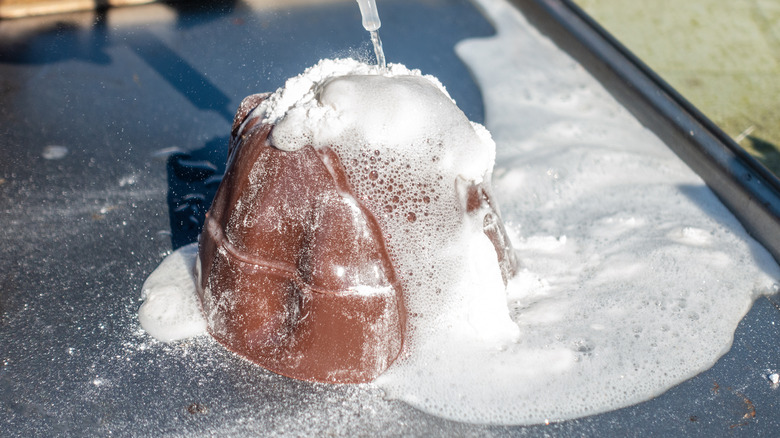Here's What Really Happens When You Mix Vinegar And Baking Soda
Ask pretty much any grade-school kid what happens when you mix vinegar and baking soda, and — assuming it hasn't been too too long since their halcyon pre-school days — they'll likely be able to tell you exactly what happens. And they'll probably enjoy a hearty laugh as well. That's because mixing baking soda and vinegar makes for a classic pre-school science experiment that kids just love, according to veteran preschool teacher Katie T. Christiansen, who blogs at Preschool Inspirations. If you don't happen to have a small kiddo nearby at the moment, and you yourself are not familiar with the fun-with-food portion of the elementary school science curriculum, then we're going to help you out, grade school style.
The first thing to know is that vinegar is highly acidic, according to USGS, with a pH (that's the scientific measure of acidity) that's as close to battery acid as anything we can safely consume gets. But please don't let that scare you, as vinegar has a number of health-supportive qualities, according to U.S. News & World Report; apple cider vinegar, in particular, can help you boost your metabolism and even relieve a scratchy throat.
Baking soda, by contrast, is mildly alkaline with a pH that isn't too far from plain old water, which is considered to be "neutral" (which is to say, neither acidic nor alkaline, according to Sciencing). So, how about we put these two near-opposites together and see what happens?
Let's get grade-school science-y, shall we?
To see what happens when you mix vinegar and baking soda, simply mix pour vinegar over a heaping spoonful of baking soda in a plastic container (large enough for you to stir up, say, a batch's worth of pancake batter). What happens? As Sciencing puts it, "the cup will soon overflow with foam and bubbles." The reason this happens is that alkaline baking soda reacts to acidic vinegar by releasing carbon dioxide gas bubbles (just like soda bubbles), according to Hyperphysics.
If you want to delve still deeper into the chemical reactions that are taking place, Wonderopolis offers a simple explanation: "When vinegar and baking soda are first mixed together, hydrogen ions in the vinegar react with the sodium and bicarbonate ions in the baking soda. The result of this initial reaction is two new chemicals: carbonic acid... [which] immediately begins to decompose into water and carbon dioxide gas."
In the context of baking, those bubbles add lightness to your baked goods, causing them to rise. In the cleaning context, you've made yourself a powerful, all-purpose cleaning solution (via Bob Vila). In the grade-school (or pre-school) context, you've made yourself a volcano (if you use your imagination). And if you add some food coloring or water-based paint and a squirt of dish soap for extra bubbling action, you've made a beautiful bubbly mess, according to Buggy and Buddy.

